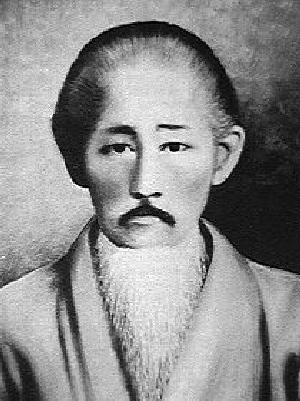“The Grand Patron Of Okinawan Goju Ryu Karate” Please share with a Friend.

Kanryo Higaonna 1853 – 1915
“The Grand Patron Of Okinawan Goju Ryu Karate”

Kanryo Higaonna was a Ryukyuan Okinawan martial artist who founded a fighting style known at the time as Naha-te.
 He is recognized as one of the
first students of Fujian White CraneKung Fu master Ryū Ryū Ko, from the Fuzhou region of China. He
returned to Okinawa ranked with expertise in kung fu and judo. His former student and disciple Chōjun Miyagi would go on to found Gōjū ryū Karate.
He is recognized as one of the
first students of Fujian White CraneKung Fu master Ryū Ryū Ko, from the Fuzhou region of China. He
returned to Okinawa ranked with expertise in kung fu and judo. His former student and disciple Chōjun Miyagi would go on to found Gōjū ryū Karate.
In 1867, Higaonna studied Monk Fist Boxing (Luohan Quan) under Aragaki Tsuji Pechin Seisho, a fluent Chinese speaker and interpreter for the Ryukyuan Court. At that time the word karate was not in common use, and the martial arts were referred to simply as Te (hand) prefaced by the area of origin. In the 1880s, Ryukyu was annexed by Japan.
Higaonna traveled to China in 1870, 1873, and 1898.
He was born in Naha, Okinawa in 1853. His family ran a successful business in merchant trading. As a youth, Kanryo worked for a rich tea merchant who made periodic trips to Fuzhian province, China. At the request of the family, the merchant introduced Kanryo to Mr Woo Lu Chin (Ryu Ryu Ko), a master in Kung Fu, and asked that he accept him as a student. Mr Chin agreed, initially employing him in the household where he trained on utensils and tools, and thence to kung fu. On one of his trips, the merchant was badly beaten by Chinese bandits. Upon hearing this, Kanryo stated that he now understood the meaning of the motto “the first principle of self-defence, starts with oneself”.
Kanryo spent 12 years under the tutelage of Mr Woo Lu Chin, and became an assistant instructor. He acquired a reputation for his proficiency in the Chinese style of combat. When he asked the master for permission to return to Okinawa, he was asked to stay and ensure the students remaining in the dojo received training to equip them to carry on the kung fu tradition. Kanryo agreed. The master told Kanryo that he had taught him all he knew.
Higaonna studied with various teachers of the Chinese martial arts. The first four years he probably studied with Wai Xinxian, or Kojo Tatai. Kanryo then trained as a student of Ryū Ryū Ko. Kanryo’s style was distinguished by its integration of both go (hard) and ju (soft) techniques in one system. He became so prominent that the name "Naha-te" became identified with his system.
 He began to teach Naha-te to the public in 1905 in the Naha
Commercial School. That same year, he opened a dojo in
Tondo-Naha. Students flocked around him,
eager to learn. Several went on to
become influential masters of what came to be called Goju Ryu Karate. Amongst
them are Chojun Miyagi, Tsuyoshi Chitose, Kyoda Shigehasu, Higa Seiko, Shiroma Shinpan, and Kenwa Mabuni.
He began to teach Naha-te to the public in 1905 in the Naha
Commercial School. That same year, he opened a dojo in
Tondo-Naha. Students flocked around him,
eager to learn. Several went on to
become influential masters of what came to be called Goju Ryu Karate. Amongst
them are Chojun Miyagi, Tsuyoshi Chitose, Kyoda Shigehasu, Higa Seiko, Shiroma Shinpan, and Kenwa Mabuni.
Kanryo was noted for his powerful Sanchinkata, or form. Students reported that the wooden floor would be hot from the gripping of his feet. In his dojo the sanchin dachi was practiced incessantly and basics were repeated with regularity. Martial arts historians long despaired at the lack of records documenting Higaonna’s contributions. Oral history has contributed immeasurably to an accurate profile.
Kanryo was known to perform kata very well, striking at lightning speed, with strong kicks, and very fast movements of his body. He attained the rank of Kensei.
Higaonna passed away in 1915, in Naha, Okinawa. His legacy is to be found in his students and a discerning martial arts community.
